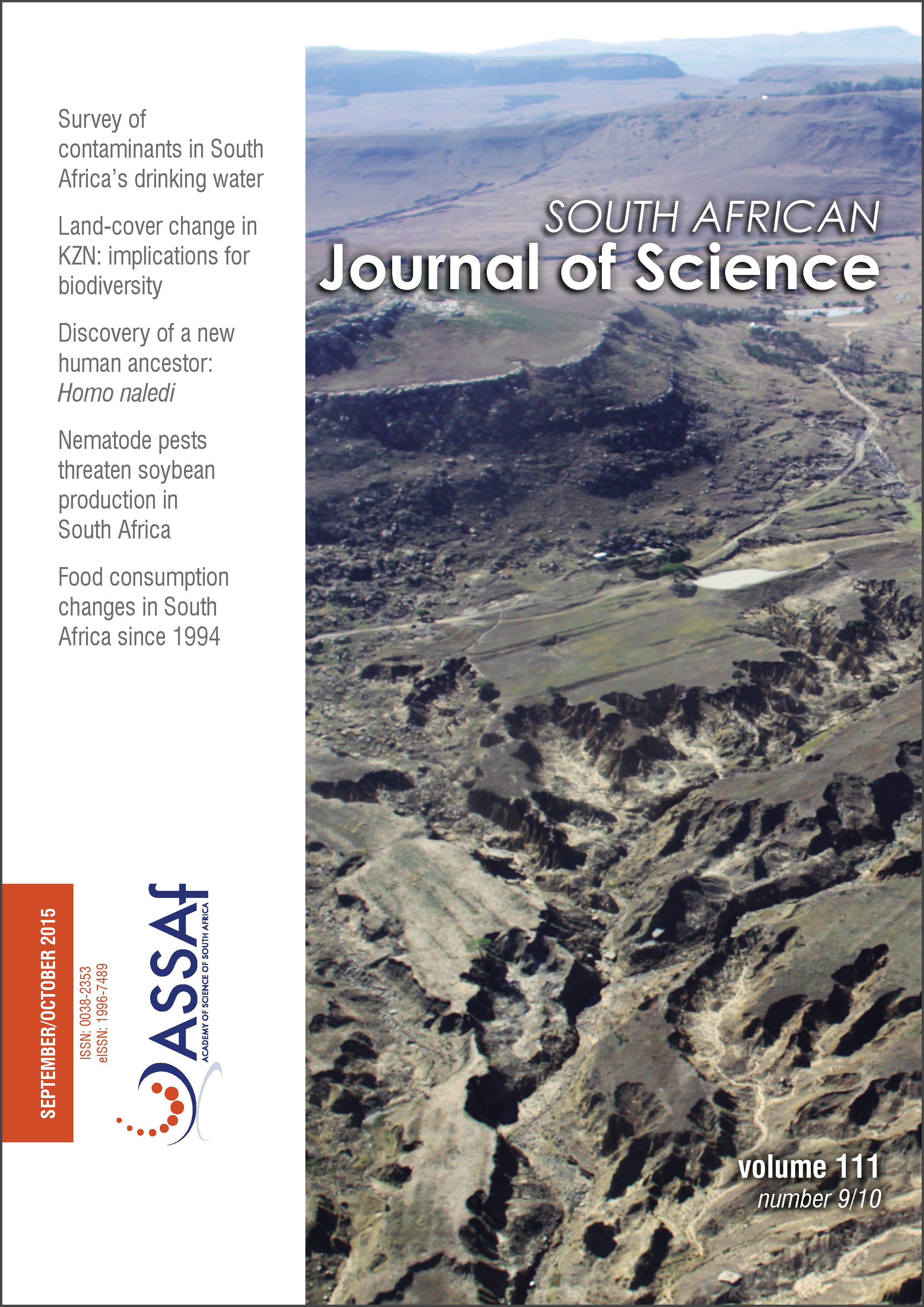Systematic land-cover change in KwaZulu-Natal, South Africa: Implications for biodiversity
DOI:
https://doi.org/10.17159/sajs.2015/20150019Keywords:
conservation planning, habitat loss, intensity analysis, legislation, satellite imageryAbstract
Land-cover change and habitat loss are widely recognised as the major drivers of biodiversity loss in the world. Land-cover maps derived from satellite imagery provide useful tools for monitoring land-use and land-cover change. KwaZulu-Natal, a populous yet biodiversity-rich province in South Africa, is one of the first provinces to produce a set of three directly comparable land-cover maps (2005, 2008 and 2011). These maps were used to investigate systematic land-cover changes occurring in the province with a focus on biodiversity conservation. The Intensity Analysis framework was used for the analysis as this quantitative hierarchical method addresses shortcomings of other established land-cover change analyses. In only 6 years (2005–2011), a massive 7.6% of the natural habitat of the province was lost to anthropogenic transformation of the landscape. The major drivers of habitat loss were agriculture, timber plantations, the built environment, dams and mines. Categorical swapping formed a significant part of landscape change, including a return from anthropogenic categories to secondary vegetation, which we suggest should be tracked in analyses. Longer-term rates of habitat loss were determined using additional land-cover maps (1994, 2000). An average of 1.2% of the natural landscape has been transformed per annum since 1994. Apart from the direct loss of natural habitat, the anthropogenically transformed land covers all pose additional negative impacts for biodiversity remaining in these or surrounding areas. A target of no more than 50% of habitat loss should be adopted to adequately conserve biodiversity in the province. Our analysis provides the first provincial assessment of the rate of loss of natural habitat and may be used to fulfil incomplete criteria used in the identification of Threatened Terrestrial Ecosystems, and to report on the Convention on Biological Diversity targets on rates of natural habitat loss.
Downloads
Published
Issue
Section
License

All articles are published under a Creative Commons Attribution 4.0 International Licence
Copyright is retained by the authors. Readers are welcome to reproduce, share and adapt the content without permission provided the source is attributed.
Disclaimer: The publisher and editors accept no responsibility for statements made by the authors
How to Cite
- Abstract 1608
- PDF 2069
- EPUB 219
- XML 242
- Supplementary Material 239













.png)